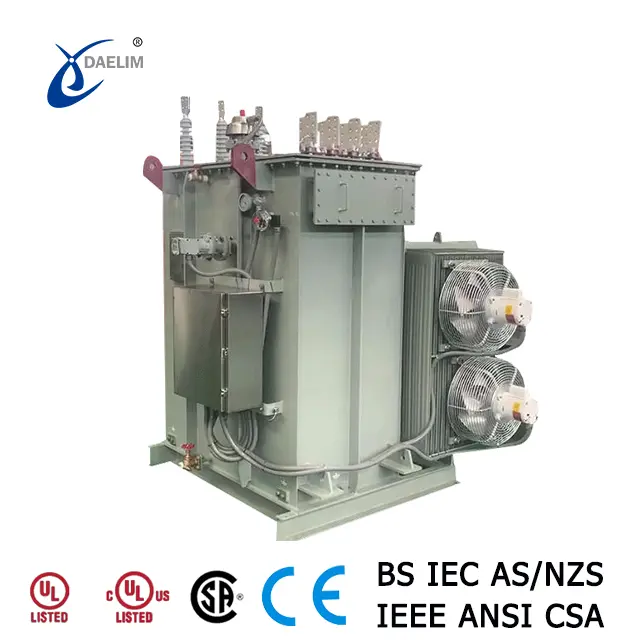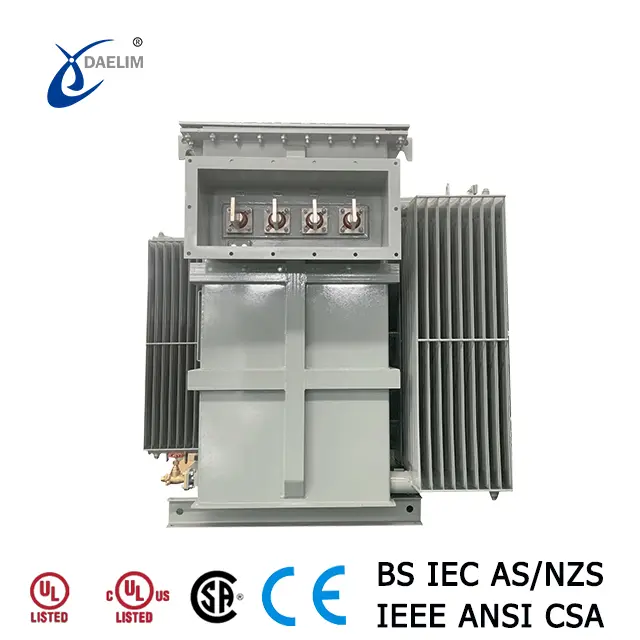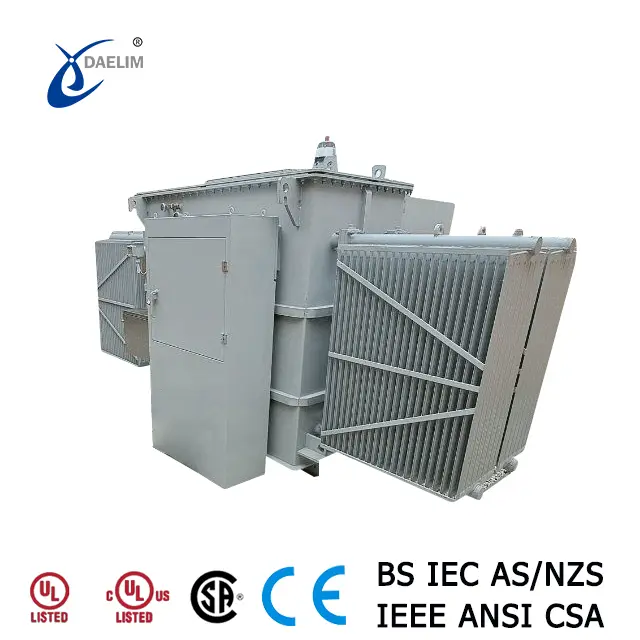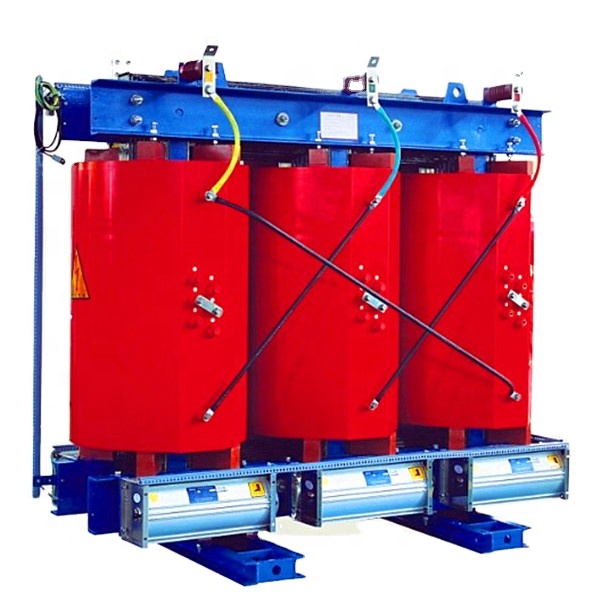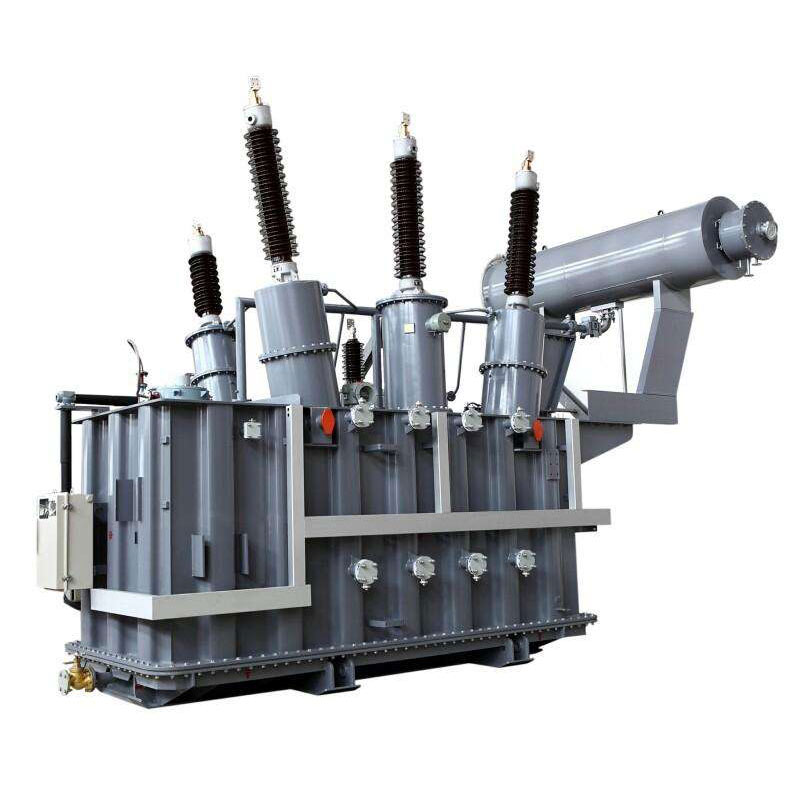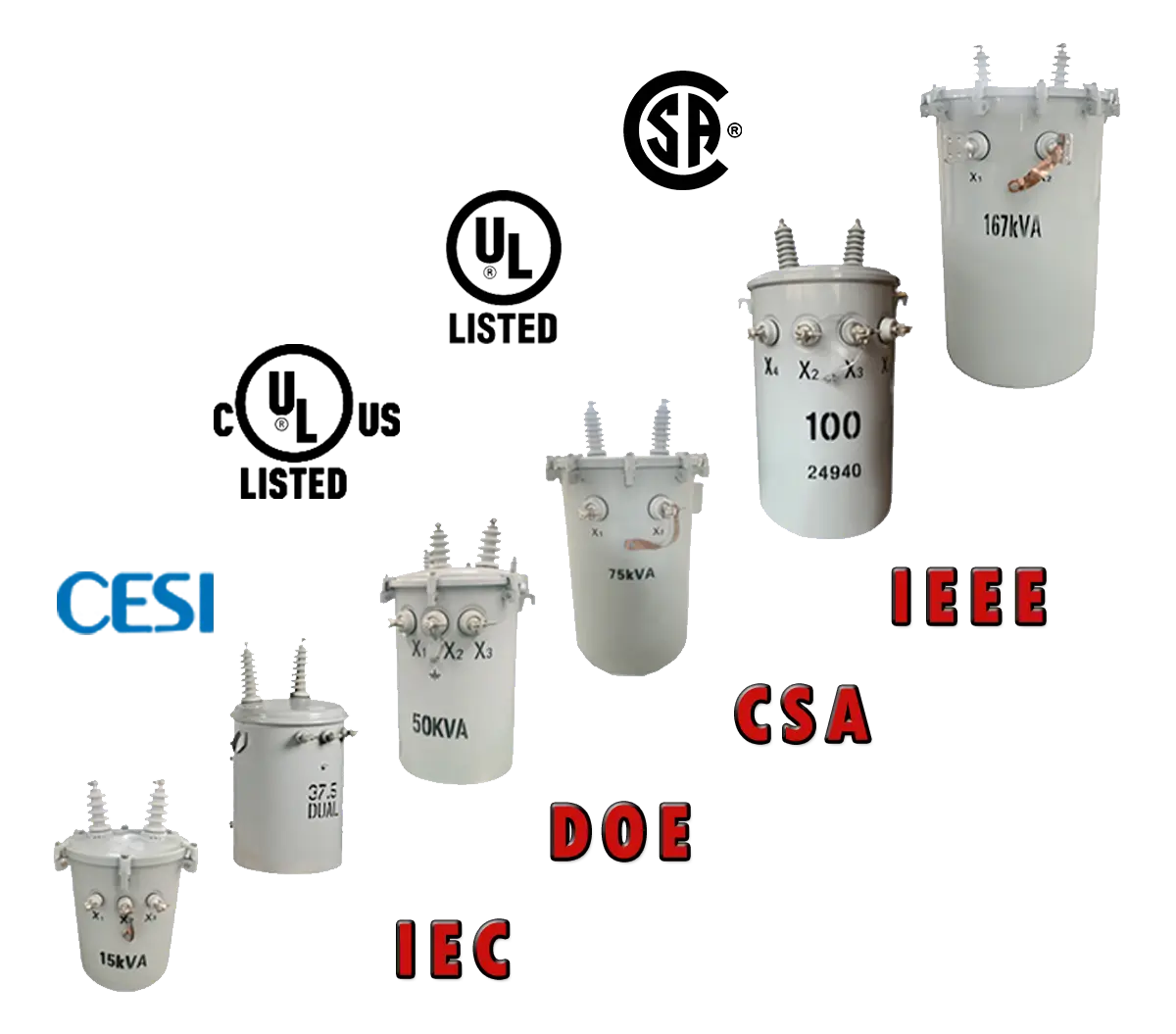The Definitive Guide to Australia Transformer
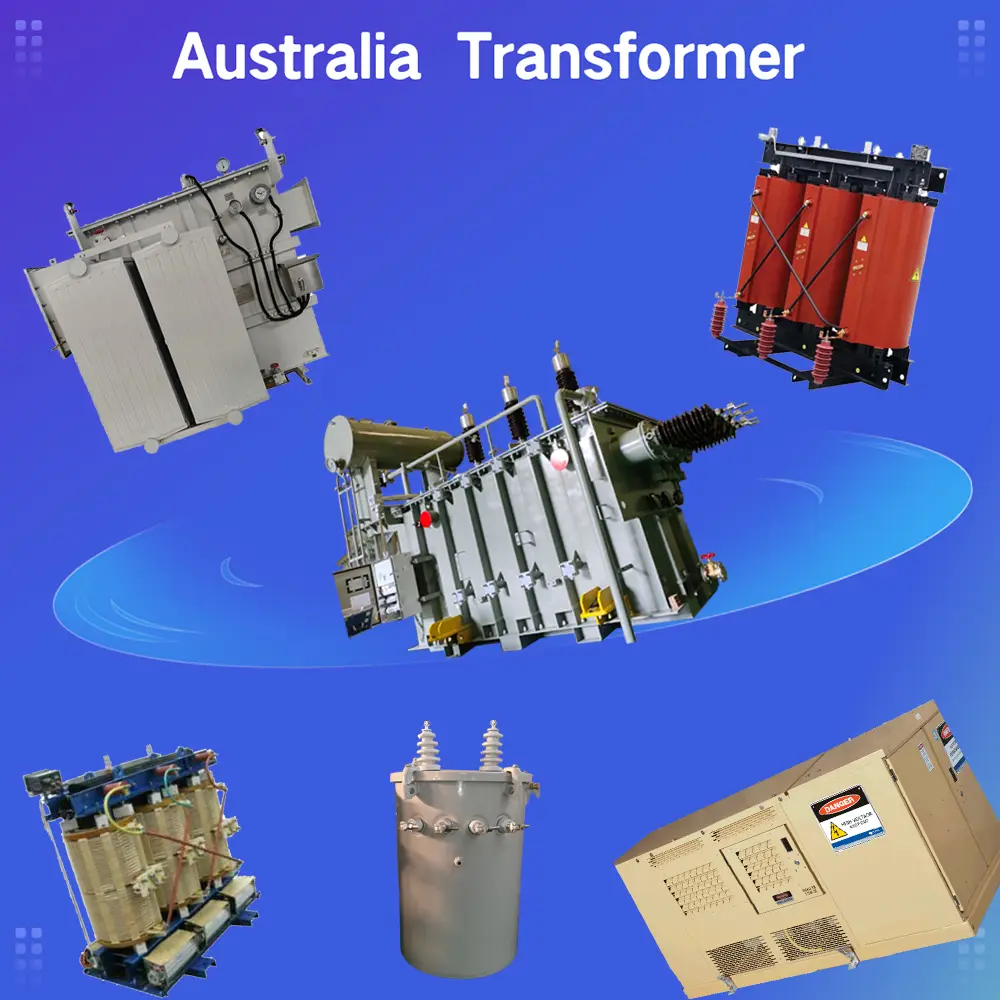
Daelim Transformer is a renowned manufacturer of professional IEC (International Electrotechnical Commission), AS (Australian Standard), and NZS(New Zealand Standard) transformers. With their expertise and high-quality products, they have established a strong presence in the medium and high voltage transformer market in Australia. Daelim Transformer offers a wide range of voltage levels, spanning from 6.6kV to 220kV, catering to diverse industrial, commercial, and utility applications.
- AS 60076
- IEC 60076
- NZS
Click here to view Daelim Transformer's projects in Australia.
Australia is the most economically developed country in the southern hemisphere, with rich mineral resources and developed agriculture and animal husbandry industries. Therefore, there are many types of transformers in the Australian market according to different application scenarios. Here we will introduce Australia Transformer in detail.
Pad Mounted Transformer
To enable remote monitoring of operational status, pad-mounted transformers are often equipped with various sensors as accessories. These sensors can provide information about parameters such as temperature, oil level, pressure, and load conditions. Remote monitoring allows for efficient maintenance and troubleshooting, minimizing downtime and improving the overall reliability of the power distribution system.
Pad-mounted transformers in Australia are typically hermetically sealed, which means that they are designed to be air and moisture tight. This sealing helps protect the transformer from external environmental factors and ensures its long-term performance and reliability.
Depending on the specific requirements, pad-mounted transformers may come with or without a cable box. The cable box provides a secure enclosure for the incoming and outgoing power cables, protecting them from damage and providing additional safety measures.
The winding of pad-mounted transformers in Australia can handle a maximum voltage of 22 kV. This means that the transformer can effectively step down the high voltage from the power grid to the desired low voltage level for distribution.
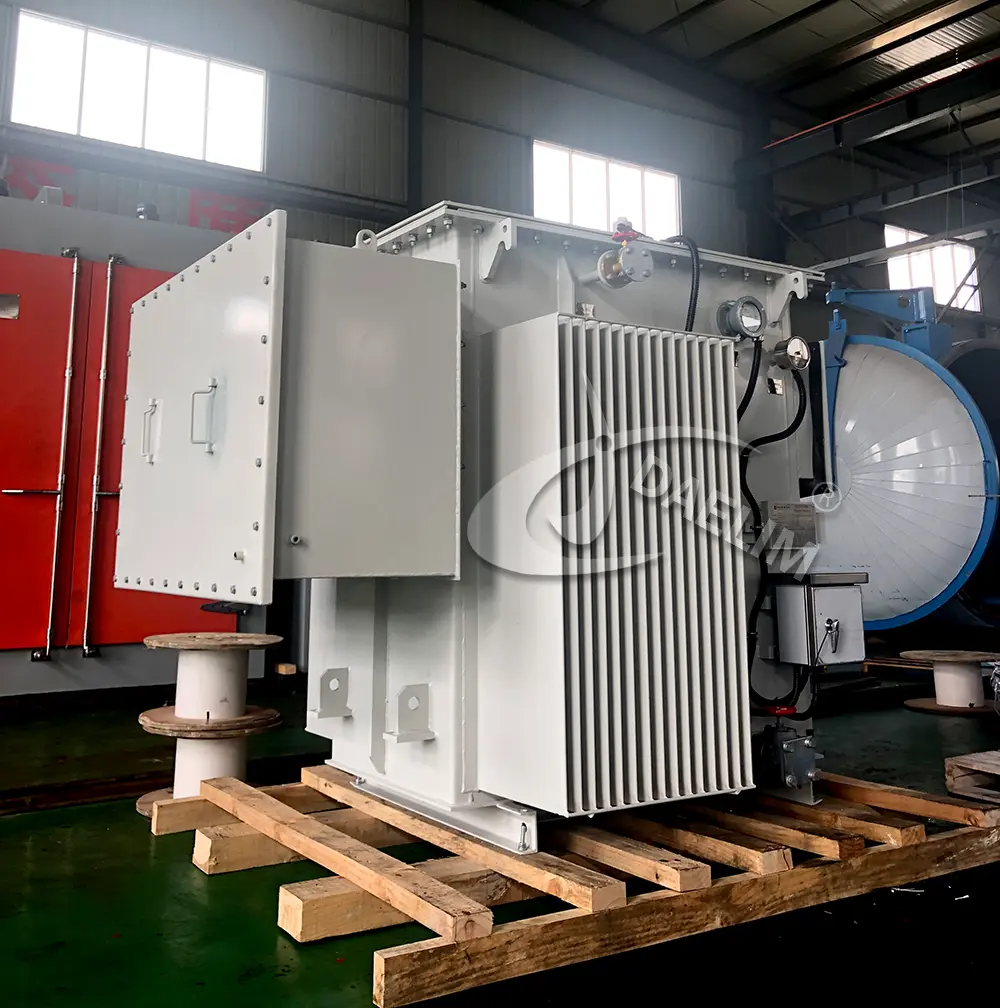
A pad-mounted transformer is a type of distribution transformer commonly used in power distribution systems in Australia. It is designed to be mounted on a cement pad and is typically used to step down high voltage to low voltage for distribution to homes, businesses, and other consumers.
The conventional voltage options for pad-mounted transformers in Australia are 6.6 kV, 11 kV, and 22 kV. These transformers are capable of transforming the high voltage from the power grid to a lower voltage suitable for use in the distribution network. The low voltage options for these transformers are typically 400V, 415V, and 433V, which are commonly used for commercial and residential applications.
Pad-mounted transformers in Australia are designed and manufactured to meet the standards specified in AS NZS 60076.1. This standard ensures that the transformers adhere to the required safety and performance guidelines.
Send Inquiry NowUnderground Transformer
Underground transformers are indeed widely used in Australia's mining industry, particularly in underground mines where height restrictions are a consideration. These transformers are designed to be shorter in height compared to standard transformers to accommodate the limited space in underground mine tunnels.
The high and low voltage components of underground transformers typically feature a side-mounted throat structure, allowing for connection to high and low voltage cabinets or other equipment. This design facilitates easy integration into the power distribution system within the mine.
To ensure mobility and convenience, the underground transformer, along with the connected high and low voltage equipment, is often placed on a skid with wheels. This enables the transformer to be easily pushed into the mine tunnel for power supply, offering flexibility and adaptability to the mining operations.
There are two main types of underground transformers: underground oil transformers and underground nitrogen transformers.
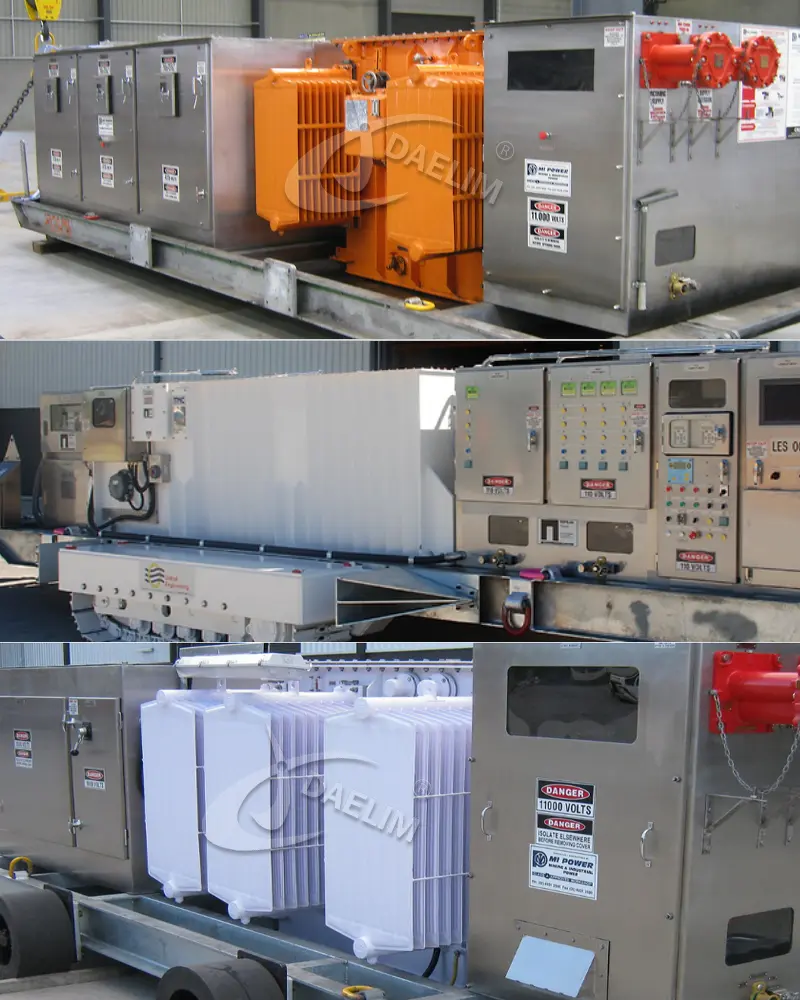
Underground Oil Transformer: This type of transformer utilizes mineral oil or vegetable oil as the cooling medium. The cooling methods commonly employed are KNAN (forced cooling) or ONAN (natural cooling). These transformers are designed with alternating high voltage (H.V.) and low voltage (L.V.) sides, providing efficient and reliable power distribution within the mining environment.
Underground Nitrogen Transformer: In contrast to underground oil transformers, underground nitrogen transformers employ nitrogen gas as both an insulating and cooling medium. Nitrogen gas offers several advantages, including its environmentally friendly nature, resistance to fire and explosion due to its inertness, and favorable physical properties for transformer operation. This type of transformer ensures enhanced safety and reliability in underground mining operations.
Both types of underground transformers are designed to meet the specific requirements of underground mines, considering factors such as space constraints, mobility, and safety. They play a crucial role in providing power supply to mining equipment and operations, contributing to the efficient and sustainable extraction of Australia's mineral resources.
Get PricePower Transformer
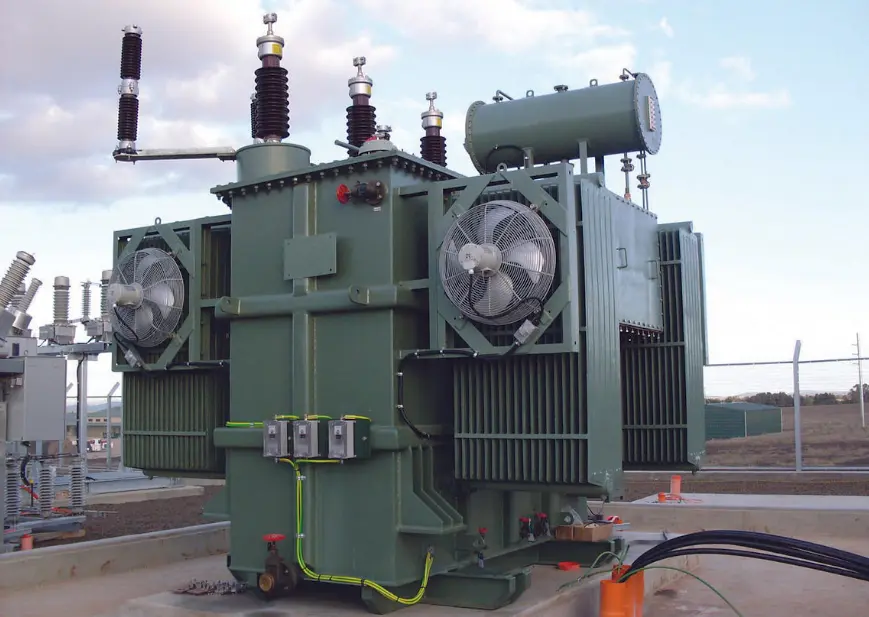
In Australia, power transformers are commonly used in various applications where the voltage requirement is equal to or greater than 66kV, and the capacity exceeds 5MVA (megavolt-ampere).
Open Cut Substation: Power transformers are utilized in open cut substations, which are above-ground installations for power distribution. These substations are typically located in open areas and play a crucial role in receiving high-voltage electricity from the transmission network and stepping it down to a lower voltage for distribution to consumers. Power transformers in open cut substations are designed to handle high voltages, ensuring efficient and reliable power supply.
Switchyards: Power transformers are also employed in switchyards, which are areas where different electrical circuits are interconnected and switching operations take place. Switchyards are commonly found in power generation plants, industrial facilities, and utility substations. Power transformers in switchyards facilitate voltage transformation and play a key role in maintaining the stability and reliability of the power system.
Learn more about Power Transformer
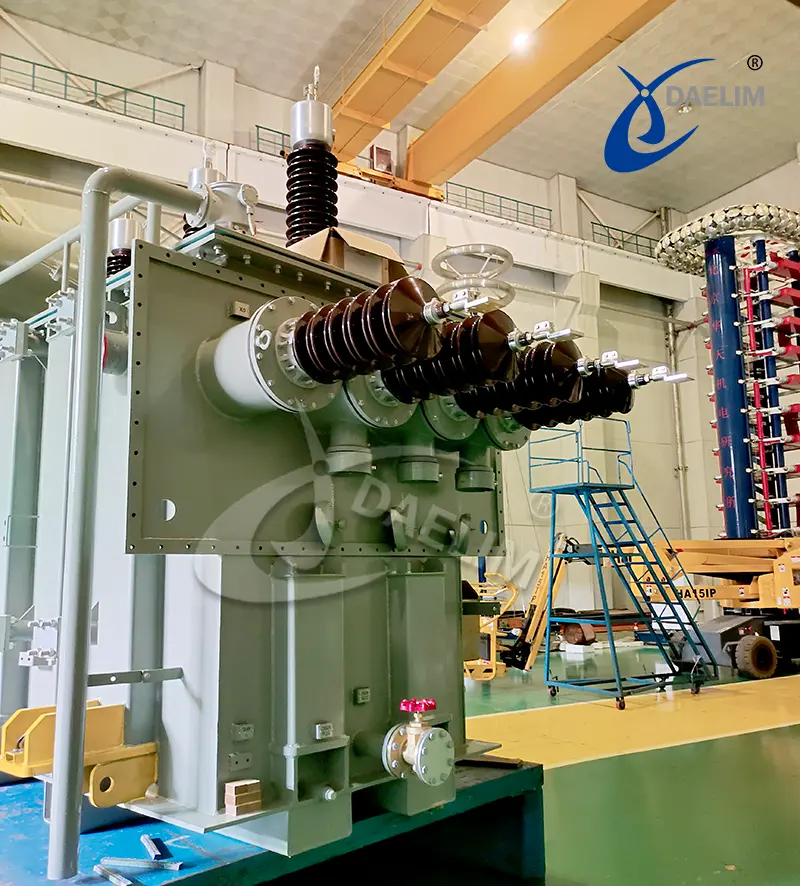
Power transformers used in Australia for applications such as open cut substations and switchyards typically have the following characteristics:
Capacity: The capacity of these transformers is typically greater than 5MVA, indicating their ability to handle high power loads efficiently.
Normally Open Bushing (H.V.): These transformers are equipped with normally open bushings on the high-voltage side. Bushings provide electrical insulation and support for the connection of high-voltage conductors.
L.V. Cable Box: Some power transformers may also have a low-voltage (L.V.) cable box. This box provides a secure enclosure for the incoming and outgoing power cables on the low-voltage side, ensuring safe and reliable connections.
These power transformers are designed to meet the specific requirements of high-voltage power distribution systems, providing reliable voltage transformation and maintaining the integrity of the electrical grid.
Get Power Transformer PricePole-mounted transformers in Australia are available in single-phase and three-phase configurations, catering to primary voltage levels of 11kV, 22kV, and 33kV, with secondary voltage options of 400V, 415V, and 433V. Capacities range from 10 to 500 kVA, providing versatility for various power requirements. These transformers adhere to industry guidelines like AEEMA/ENA, IEC/AS 60076, NZS, or user-specific requirements, ensuring safety, performance, and efficiency. Daelim Transformer delivers reliable, high-quality power distribution, designed and manufactured to meet Australian standards.
Send Inquiry Now
Kiosk Transformer
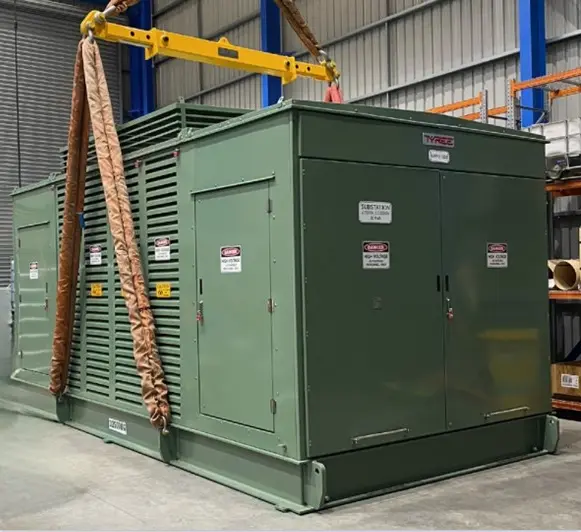 A Kiosk transformer, also known as a packaged substation, is a compact and self-contained unit that integrates transformers, high and low voltage switchgear, and other necessary components. It is typically installed on a cement pad and is commonly used for power distribution in urban and residential areas.
A Kiosk transformer, also known as a packaged substation, is a compact and self-contained unit that integrates transformers, high and low voltage switchgear, and other necessary components. It is typically installed on a cement pad and is commonly used for power distribution in urban and residential areas.
The Kiosk transformer is designed to be fully enclosed, providing protection against environmental factors such as dust, moisture, and tampering. The enclosure, often in the form of a shell cabinet, ensures the safety and reliability of the equipment inside.
There are two main types of insulation commonly used in Kiosk transformers: epoxy and oil.
Epoxy: Some Kiosk transformers utilize epoxy resin as the insulation medium. Epoxy insulation offers advantages such as high dielectric strength, resistance to moisture and contaminants, and compactness. Epoxy-insulated transformers are designed for reliability and safety in various operating conditions.
Oil: Other Kiosk transformers employ mineral oil as the insulation and cooling medium. Oil-filled transformers have been widely used for many years and offer excellent dielectric properties and effective heat dissipation. They are designed to withstand the thermal stresses associated with power distribution.
Kiosk transformers typically include cable boxes or trunking for cable management. These components provide secure enclosures and pathways for incoming and outgoing power cables, ensuring proper cable termination and protection. Cable boxes or trunking help to organize and maintain the integrity of the electrical connections within the Kiosk transformer.
Overall, Kiosk transformers offer a compact and efficient solution for power distribution in urban and residential areas. With their fully enclosed design, choice of insulation type (epoxy or oil), and inclusion of cable boxes or trunking, they provide a reliable and safe solution for distributing electricity in a compact and self-contained unit.
Dry Varnished Transformer
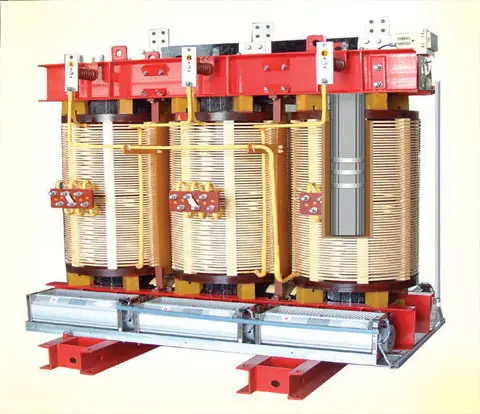 A dry varnished transformer, also known as a dry-type transformer, is a type of transformer that uses solid insulation materials instead of liquid insulation. These transformers are typically designed for indoor installations and are known for their enhanced safety, reduced environmental impact, and ease of maintenance compared to oil-filled transformers.
A dry varnished transformer, also known as a dry-type transformer, is a type of transformer that uses solid insulation materials instead of liquid insulation. These transformers are typically designed for indoor installations and are known for their enhanced safety, reduced environmental impact, and ease of maintenance compared to oil-filled transformers.
When it comes to ventilation, dry varnished transformers can be designed with or without enclosure ventilation.
With Enclosure Ventilation: Some dry varnished transformers are equipped with enclosure ventilation. This means that the transformer's enclosure is designed to allow for the flow of air through openings or vents. Enclosure ventilation helps dissipate heat generated during transformer operation, ensuring efficient cooling and maintaining optimal operating temperatures.
Without Enclosure Ventilation: Other dry varnished transformers may be designed without enclosure ventilation. In this case, the enclosure is sealed to prevent the ingress of external contaminants and to provide additional protection to the internal components. Transformers without enclosure ventilation often rely on natural convection for cooling.
Additionally, dry-varnished transformers may offer an option for fan cooling. Fan cooling involves the use of fans or blowers to increase the airflow within the transformer's enclosure, enhancing the cooling process. Fan cooling can be particularly beneficial in applications where the transformer is subjected to higher loads or operating in environments with elevated ambient temperatures.
The choice between enclosure ventilation and fan cooling depends on factors such as the transformer's capacity, operating conditions, and the cooling requirements of the specific application. Both methods aim to maintain the transformer within the appropriate temperature range to ensure efficient and reliable operation.
Dry-varnished transformers are widely used in various applications, including commercial buildings, industrial facilities, data centers, and renewable energy installations. They provide a safe and environmentally friendly solution for electrical power distribution, with options for cooling to suit different operational needs.
Epoxy/Cast Resin Transformer
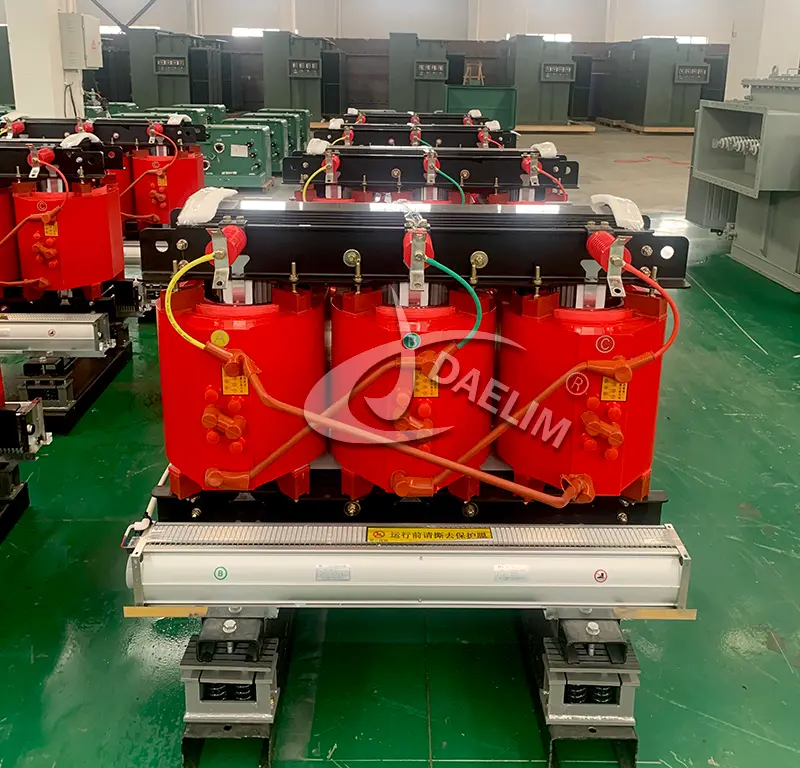 Epoxy or cast resin transformers, also known as dry-type transformers, are designed with solid insulation materials, such as epoxy or cast resin, instead of liquid insulation. These transformers offer various advantages, including enhanced safety, reduced fire risk, and environmental friendliness.
Epoxy or cast resin transformers, also known as dry-type transformers, are designed with solid insulation materials, such as epoxy or cast resin, instead of liquid insulation. These transformers offer various advantages, including enhanced safety, reduced fire risk, and environmental friendliness.
When it comes to ventilation, epoxy or cast resin transformers can be designed with or without enclosure ventilation.
With Enclosure Ventilation: Some epoxy or cast resin transformers are equipped with enclosure ventilation. This means that the transformer's enclosure is designed to allow for the flow of air through openings or vents. Enclosure ventilation helps dissipate heat generated during transformer operation, ensuring efficient cooling and maintaining optimal operating temperatures.
Without Enclosure Ventilation: Other epoxy or cast resin transformers may be designed without enclosure ventilation. In this case, the enclosure is sealed to prevent the ingress of external contaminants and to provide additional protection to the internal components. Transformers without enclosure ventilation often rely on natural convection for cooling.
Epoxy or cast resin transformers may also offer options for fan cooling and water cooling:
Fan Cooling: Fan cooling involves the use of fans or blowers to increase the airflow within the transformer's enclosure, enhancing the cooling process. Fan cooling can be particularly beneficial in applications where the transformer is subjected to higher loads or operating in environments with elevated ambient temperatures.
Water Cooling: Some epoxy or cast resin transformers may provide an option for water cooling. Water cooling involves circulating water through channels or pipes within the transformer's enclosure to dissipate heat. Water cooling can be advantageous in applications where there are space constraints or when additional cooling capacity is required.
The choice between enclosure ventilation, fan cooling, or water cooling depends on factors such as the transformer's capacity, operating conditions, cooling requirements, and specific application needs. These options offer flexibility in adapting the cooling method to ensure efficient operation and temperature control of the epoxy or cast resin transformer.
Epoxy or cast resin transformers find applications in various industries, including commercial, industrial, and renewable energy sectors, where their safety features, environmental benefits, and customizable cooling options make them a reliable choice for electrical power distribution.
Australia Transformer Installation
The intended installation location of the transformer can greatly impact its design, construction, and features. Here are the different options for transformer installation in Australia:
Underground: Transformers designed for underground installation are built to withstand environmental conditions such as moisture, soil corrosion, and limited space. Such as mine tunnels in Australia.
Outdoor: Outdoor transformers are designed to withstand various weather conditions, including temperature fluctuations, rain, and UV exposure. They are typically housed in weatherproof enclosures or mounted on concrete pads, ensuring durability and safe operation in open-air environments.
Indoor: Indoor transformers are designed for installation in enclosed spaces such as substations, buildings, or transformer rooms. They are built with features like ventilation systems, noise reduction measures, and insulation to ensure safe and efficient operation within indoor environments.
Switch Room: Switch rooms house electrical equipment, including transformers, switchgear, and control panels. Transformers installed in switch rooms are typically designed to meet the specific requirements of the room's configuration, ventilation, and electrical layout.
Based on the nominated installation location, the Daelim transformer can customize transformer to meet the necessary specifications, environmental considerations, and safety standards required for that particular setting.
Reading more about Transformer Installation
Australia Transformer Cooling System Options
- ON (Mineral Oil Natural Force): Harnesses the innate cooling properties of mineral oil for efficient heat dissipation in transformers.
- KN (Flash Point Oil Natural Force): This system, utilizing flash point oil derived from vegetable sources, naturally cools transformers. It shares similarities with the ON option.
- GN (Nitrogen): A cooling system employing nitrogen gas, which effectively removes heat and helps prevent oxidation in transformers.
- AN (Air Natural with Epoxy): Utilizes air as a natural coolant in conjunction with epoxy insulation, augmenting performance and ensuring efficient cooling.
- OD (Oil Forced – Water Cooled): A highly effective cooling mechanism that combines forced oil circulation with water cooling to achieve optimal temperature regulation in transformers.
Australia Transformer Colour Options
- RAL7033 - Cement Grey: A subdued and versatile grey shade that blends well with various environments.
- RSL7035 - Light Grey: A light grey hue that provides a clean and modern appearance for transformers.
- RAL 9003 - Signal White: A bright and crisp white color that enhances visibility and gives a fresh look to transformers.
- RAL 2003 - Orange: An eye-catching and vibrant orange shade that adds a pop of color to transformer installations.
- RAL 3020 - Signal Red: A bold and attention-grabbing red color option for transformers that stands out in its surroundings.
- RAL 5010 - Strong Blue: A strong and deep blue shade that imparts a sense of stability and reliability to transformers.
Australia Transformer Accessories Options
| Accessories | ||
| Cooling | ||
| 1 | Radiator | Yes/No |
|
| 1a) Isolation valve | Yes/No |
| 2 | Cooling fans | Yes/No |
|
| 2a) BI – Fan voltage/phases |
|
| Temperature monitoring | ||
| 1 | RTD | Yes/No |
|
| 1a) Winding | Yes/No |
|
| 1b) Tank | Yes/No |
| 2 | Oil Temperature gauge/thermometer | Yes/No |
|
| 2a) Alarm/trip | Yes/No |
| 3 | Winding temperature gauge | Yes/No |
|
| 3a) Alarm/trip | Yes/No |
| Hermetically sealed | Yes/No | |
| Pressure relief valve | Yes/No | |
| 1 | Aux switch | Yes/No |
| Oil level indicator (site gauge) | Yes/No | |
| Conservator | Yes/No | |
| 1 | Buchholz relay with alarm/trip | Yes/No |
| 2 | Silica gel breather | Yes/No |
| Oil sample, drain & filling valve | Yes | |
| Earthing terminal |
| |
| HV current transformer | Yes/No | |
| 1 | 3 of (1 per phase) |
|
| 2 | 3 of (1 per phase) |
|
| Terminal Box | Yes/No | |
| 1 | Stainless steel | Yes/No |
| Lifting lugs | Yes/No | |
| 1 | Certified | Yes/No |
| 2 | Standard | Yes/No |
| Low oil trip switch | Yes/No | |
| Tap changer | Yes/No | |
| 1 | Tap range |
|
| 2 | On load of off load | On/Off |
| Tap switch change/enclosure | Yes/No | |
| 1 | Cover limit switch | Yes/No |
| Oil level Switch | Yes/No | |


